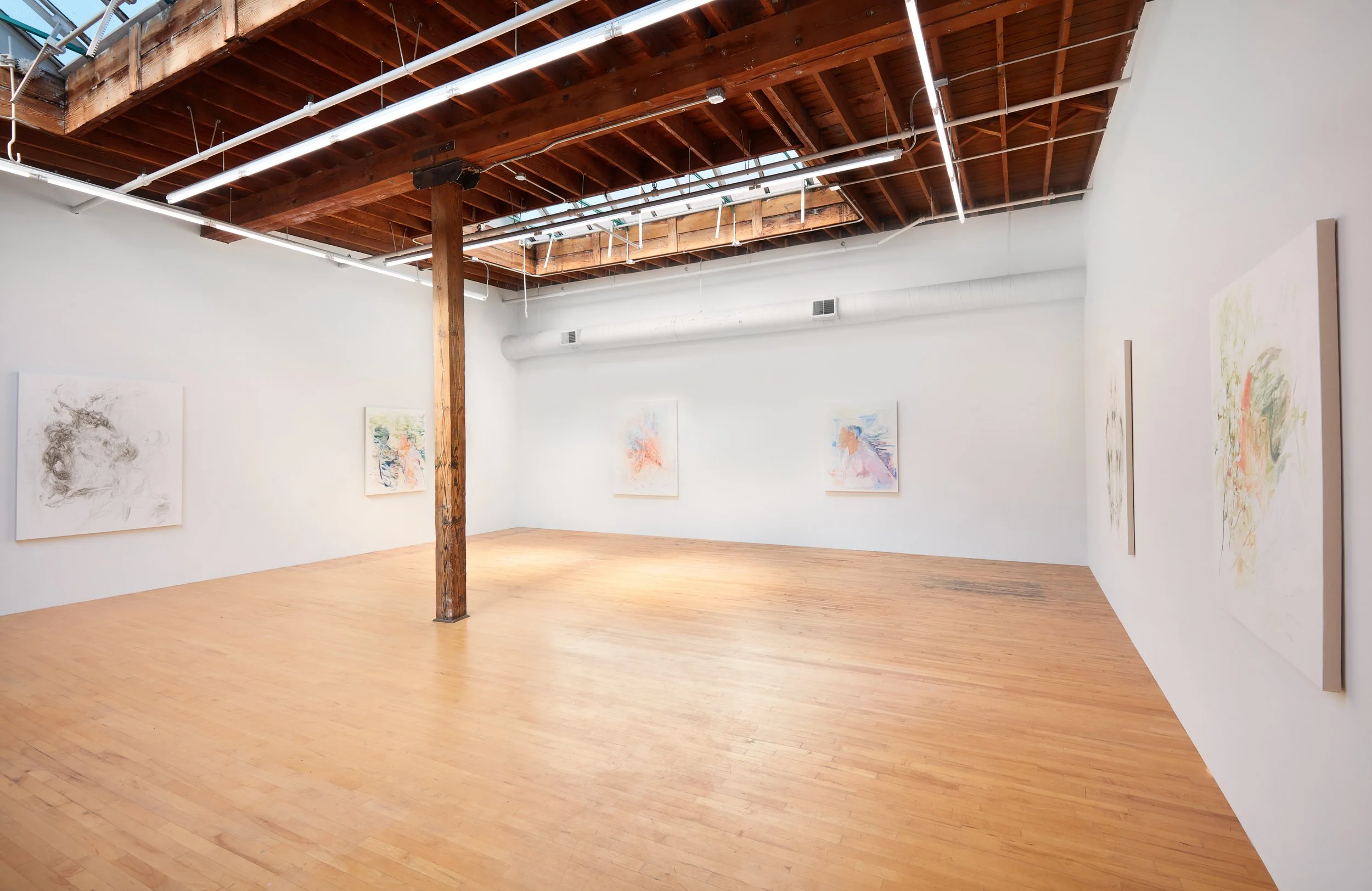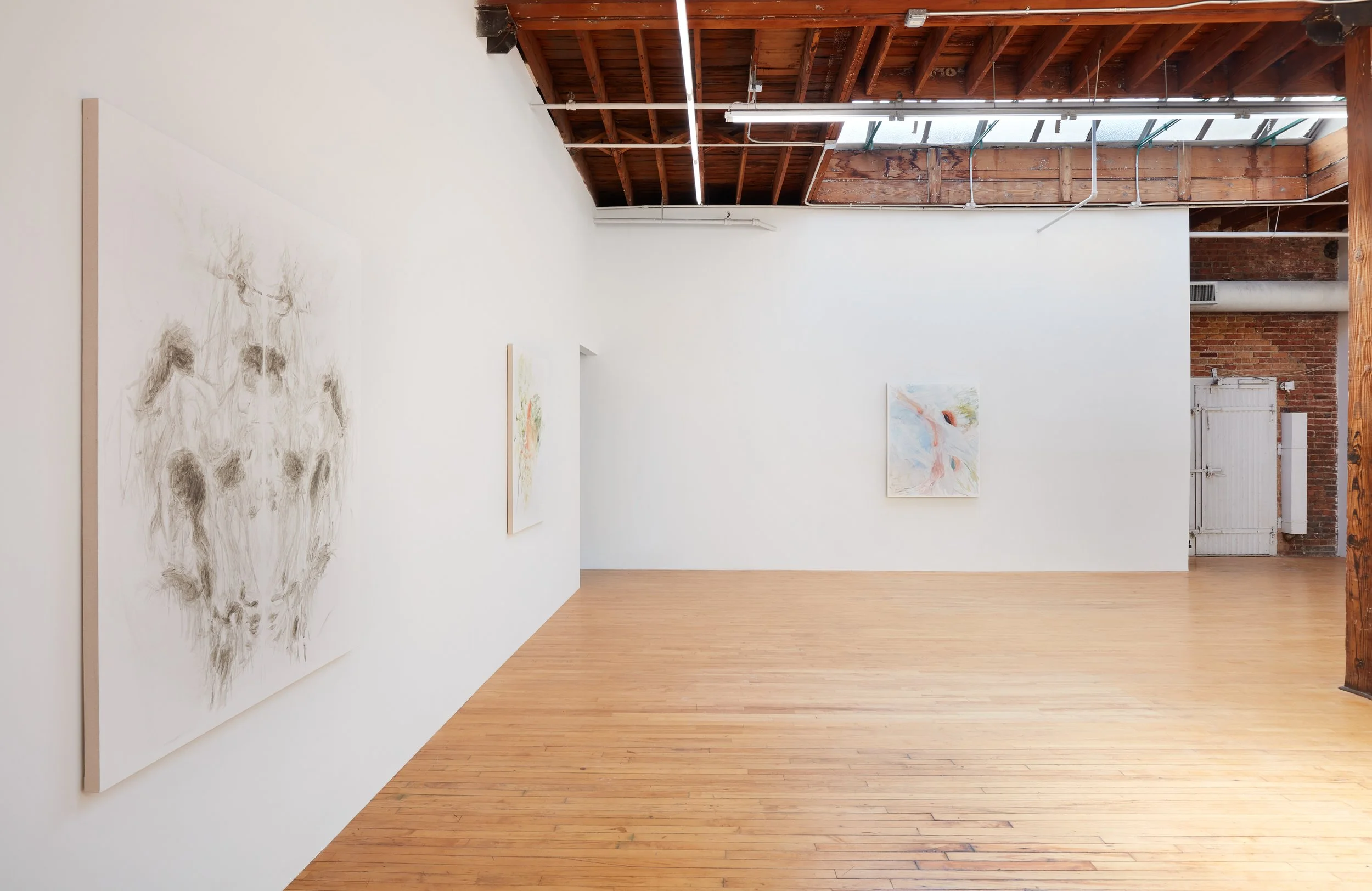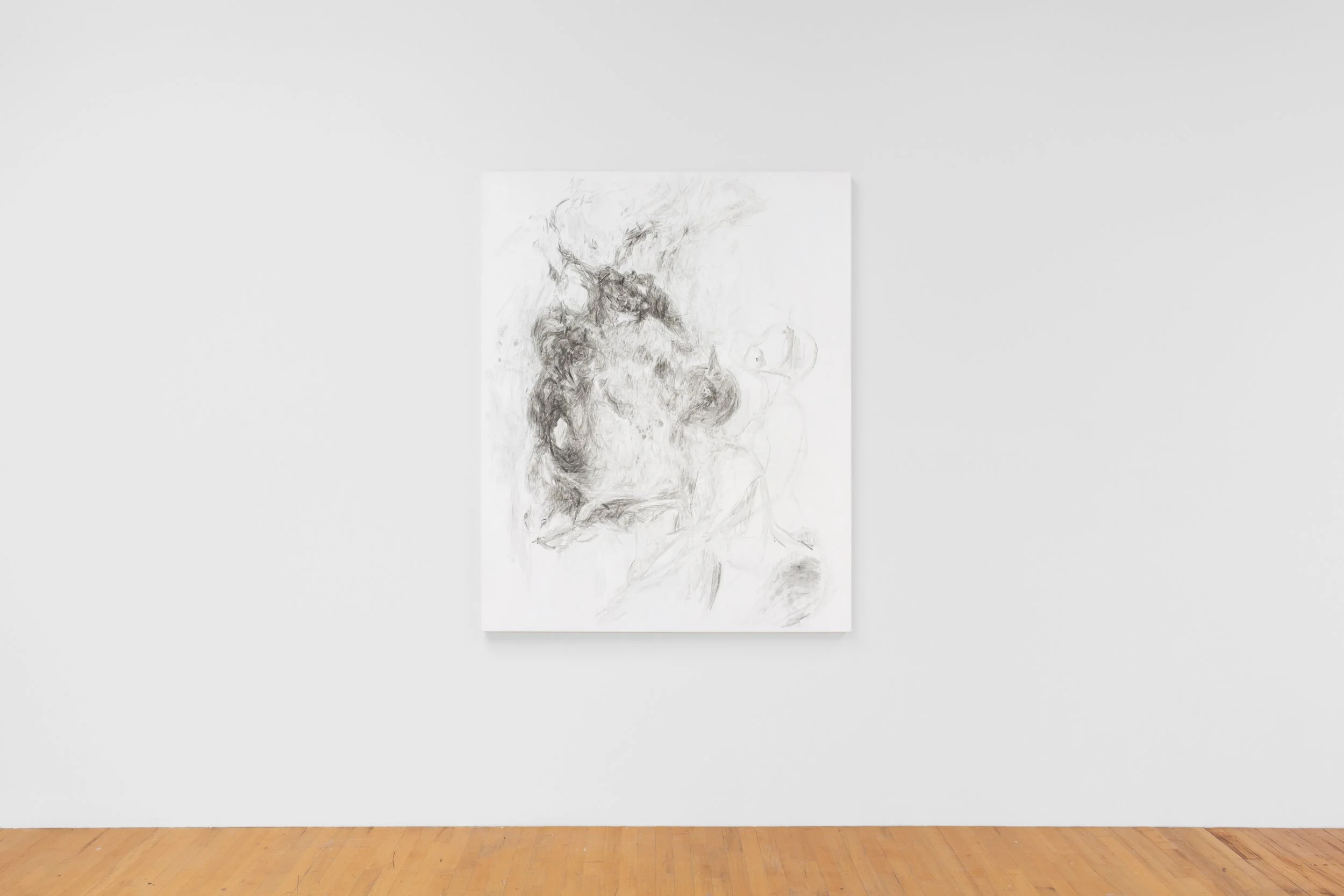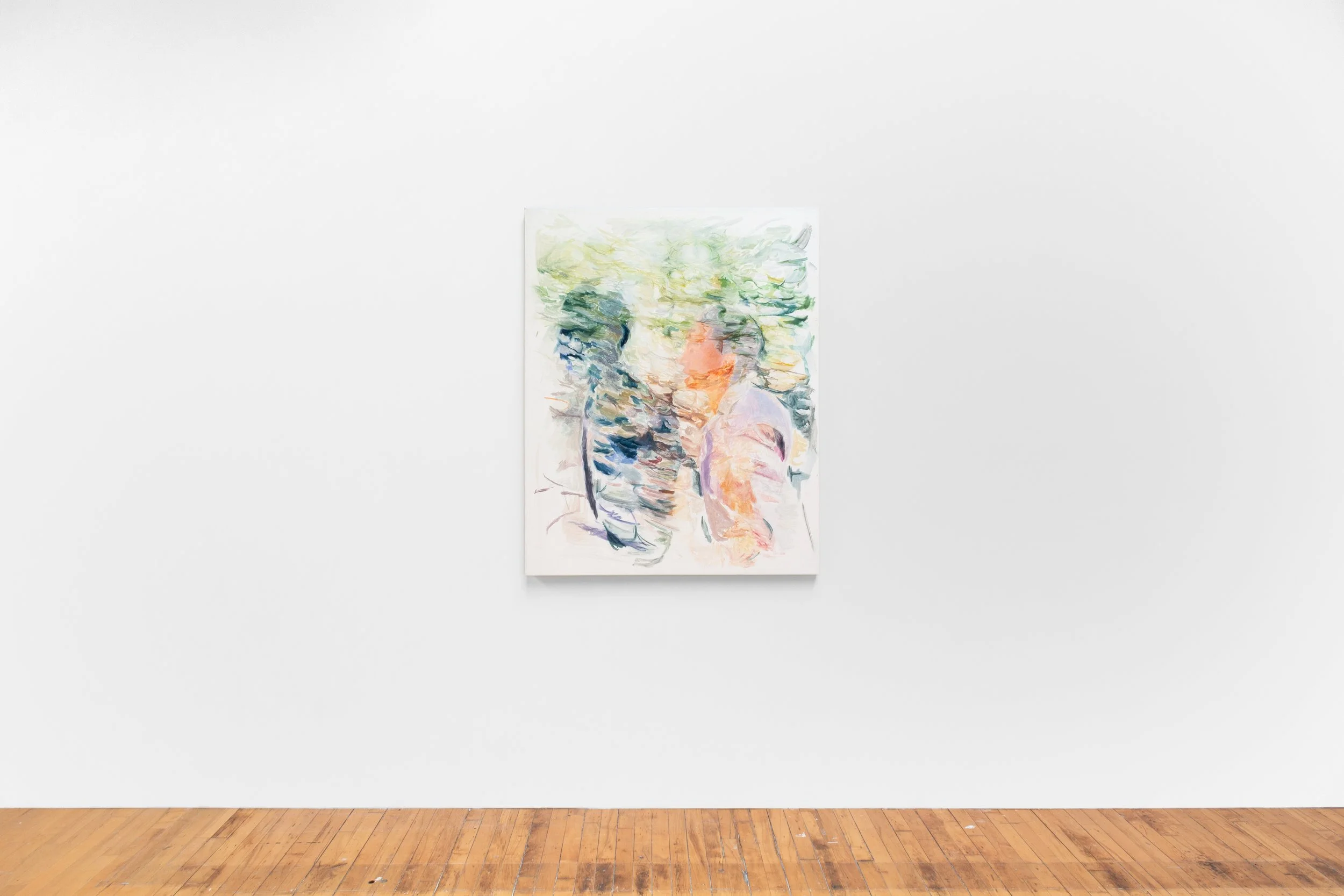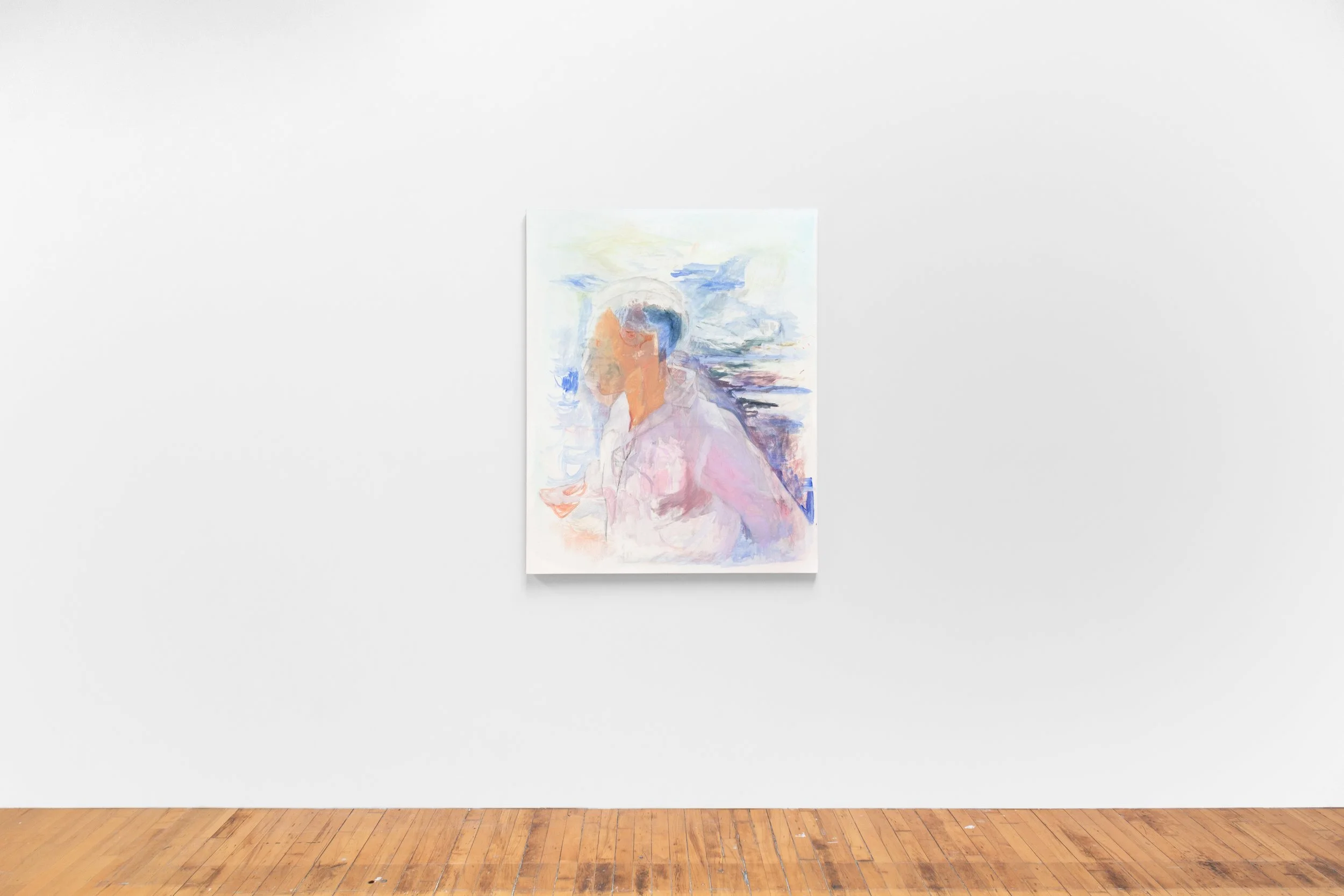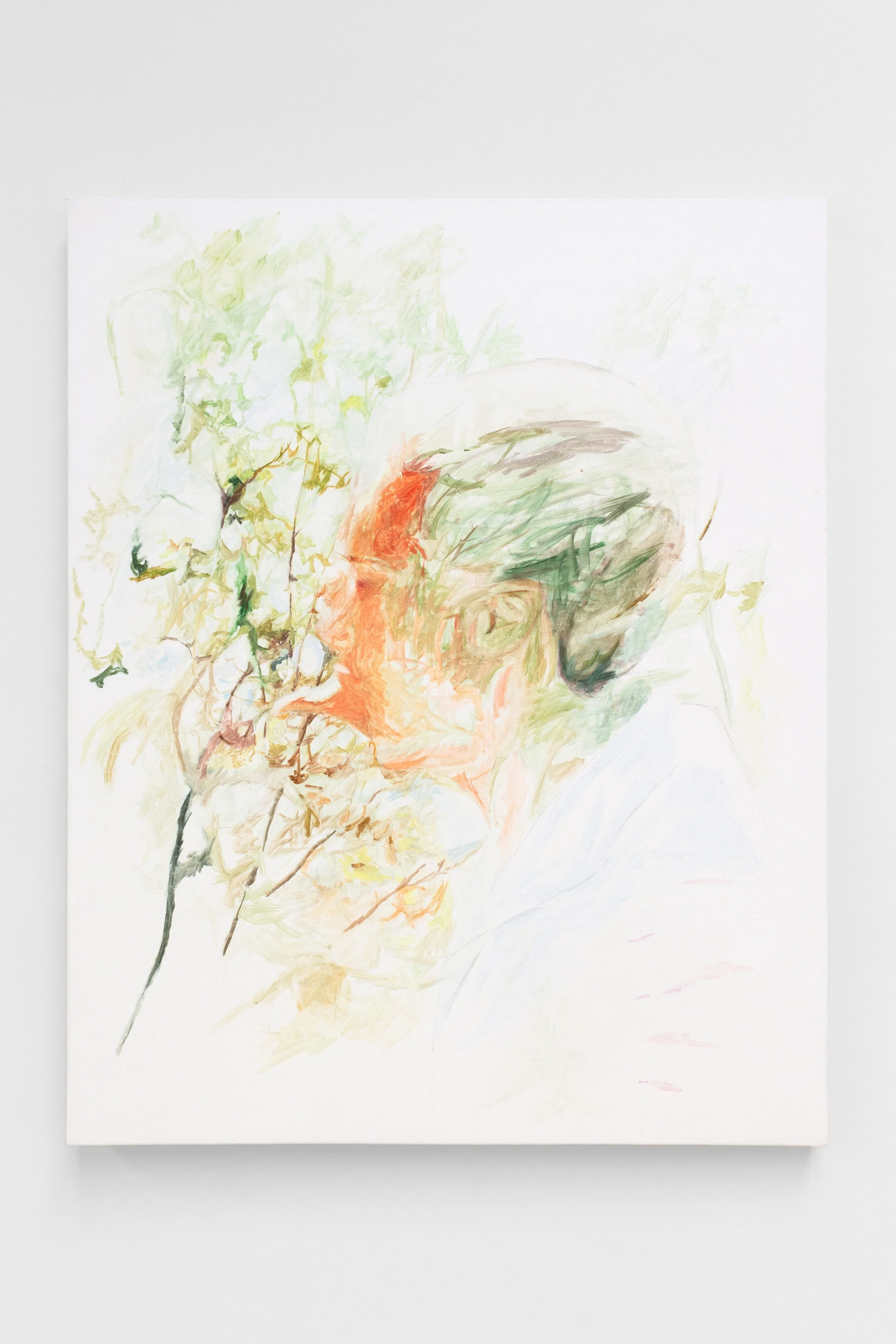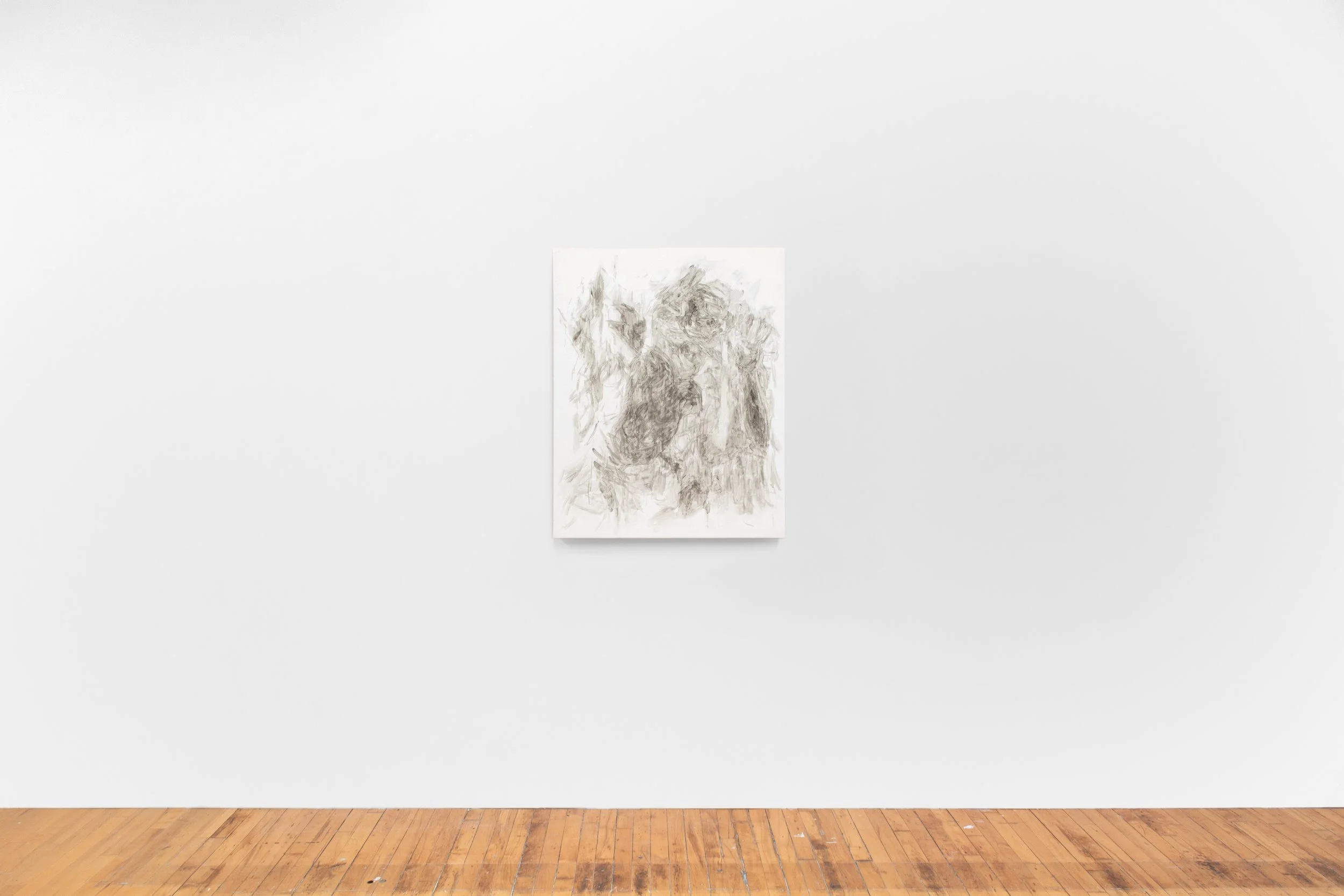Sean Mullins
It’s a hungry will, don’t you think darling
May 18 – July 13, 2024
A vital, unpredictable, erotic lifeforce is central in Sean Mullins’s new body of paintings. His marks accumulate in an approach that collapses the impressionistic with the expressionistic; the internal psychological space with the external; and the pictorial with the abstract. The works do not attempt to be all things at once, but the artist’s questions—about life’s variations—are made evident in the colliding energy of each stroke of paint.
It’s a hungry will, don’t you think darling focuses on an anonymous runner, a figure in motion through wooded and airy landscapes. Mullins paints the runners, so to speak, in transitory space, capturing their swiftness through rippling action lines that replicate the figure's contour as it moves on, like a faint shadow. Titled Swerve I, II, III, and IV, the runners are named after the key idea from a ground-breaking text called On the Nature of Things, by the ancient Roman poet and philosopher Lucretius. The text introduces a materialist philosophy, holding that matter is the fundamental substance in nature, and that all that exists, including mental states and consciousness, is ultimately physical. He deemed that nature consists of two simple principles: atom and void, and that these two things define the position, shape, and arrangement of the world around us.
The swerve that the runners are named after represents a phenomena of collision. When atoms move they deflect in space in unpredictable ways. This swerve allows for macroscopic blows between them—an endlessly generative collision that enables nature to produce. The Swerve series captures both void, in an embrace of white canvas and its resulting evocation of infinite space; and atom, in the vivacity of a symbiotic human-environment. Elaborating on the potential of a physicalist (materialist) position, Mullins quietly introduces a second figure into these works, allowing fingers to explore the contours of a runner’s lips in Swerve IV, and a hand to run through hair in an adjacent work: A kiss what happens there, something of élan vital. The term coined by French philosopher Henri Bergson, élan vital or “vital force,” is what propels Mullins’ creative process, down to the most finite details of his gesture. Productive energy, as philosophized by Lucretius, or Creative Evolution, as by Bergson in his eponymous book, both thread consciousness with the reproductive drive, moving nature in a sustained, at times treacherous, state of erotic harmony.
Mullins creates depth through a particulated, multi-layered surface. He paints primarily from reference images, some of which are photos of photos on other screens. The resulting paintings include the distortions within these mediated images, which means counterintuitive marks, like reflections of light from Mullins’s window bouncing off his computer screen and captured by his camera, receive compositional treatment alongside the dappled light and undulating figures in the reference images themselves. Mullins constructs an image and then removes it, adds to it and subtracts from it constantly in an extension of void and atom—a space and a body connected through the boundless ability to move and create in all directions.
Surface play reaches its pinnacle in two Cloud paintings, a name that continues the particular panorama of Mullins’s show. Produced as charcoal body prints on vellum, then photographed, and finally rendered in paint, the pictorial plane twists and becomes a ground, privileging an indexical form over illusionistic space. Most clearly in Narcissus after Caravaggio (Cloud), the displaced body, mirrored on one half of the image, becomes an instrument of the possibility of form. Through highly expressive means, the Cloud works enact the impression of a physicalized consciousness conveyed in the Swerve paintings. Mullins, in using his own body to create the initial prints, engages with a localized impact that conflates body and surface. Through collision, nature shapes itself.
— Isabella Achenbach
Sean Mullins (b. 1993, New Jersey) is an artist living and working in New York. Recent solo exhibitions include The Miracle is to Believe, Diez, Amsterdam, Netherlands; Rewriting our Imaginations, Liste Art Fair, Basel, Switzerland; and Protracted yawn, evanescing Eos, FRAGILE, Berlin, Germany.
Selected group exhibitions include Under the Volcano II, LOMEX, New York, NY; Common Nocturnes, Simone Subal, New York, NY; Phantom Folly, Bianca D'Alessandro, Copenhagen, Denmark; artgenève, FRAGILE at artgenève, Geneva, Switzerland; The Whole World Was Not Accessible to My Gaze, Carillon Gallery, Fort Worth, TX; Opposing Shores, LOMEX, New York, NY; Foul Perfection, Neue Alte Brücke, Frankfurt am Main, Germany; An Art Exhibition, The Midwestern Society for Arts & Crafts, Detroit, MI; The Light Within The Bulb, Ed. Varie, New York, NY; Condo New York, LOMEX, New York, NY; Some People Are Worth Melting For, Ginny Projects, Wales, UK; The Hard Facts Of Tragedy In April, LOMEX, New York, NY; Friend of a Friend, Piktogram, Warsaw, Poland; and Cold Open Verse, Knockdown Center & MoMA PS1, New York, NY.
Sean Mullins
Woof Woof (Cloud), 2024
Oil on canvas
62 x 50 inches
157.5 x 127 cm
Sean Mullins
Swerve II, 2024
Oil on canvas
50 x 40 inches
127 x 101.6 cm
Sean Mullins
A kiss what happens there, something of élan vital, 2024
Oil on canvas
62 x 50 inches
157.5 x 127 cm
Sean Mullins
Swerve I, 2024
Oil on canvas
50 x 40 inches
127 x 101.6 cm
Sean Mullins
Narcissus after Caravaggio (Cloud), 2024
Oil on canvas
62 x 50 inches
157.5 x 127 cm
Sean Mullins
Swerve IV, 2024
Oil on canvas
50 x 40 inches
127 x 101.6 cm
Sean Mullins
Swerve III, 2024
Oil on canvas
50 x 40 inches
127 x 101.6 cm
Sean Mullins
Woof Woof (Study), 2024
Oil on canvas
40 x 32 inches
101.6 x 81.3 cm
